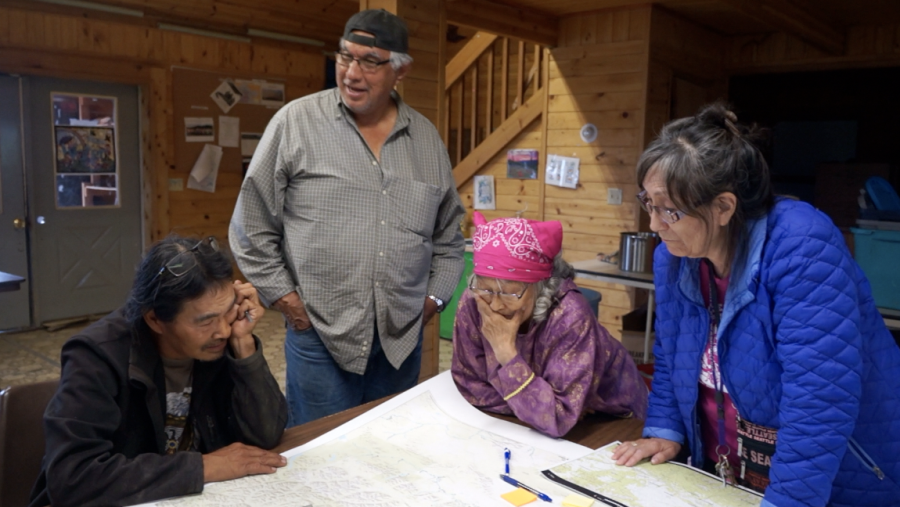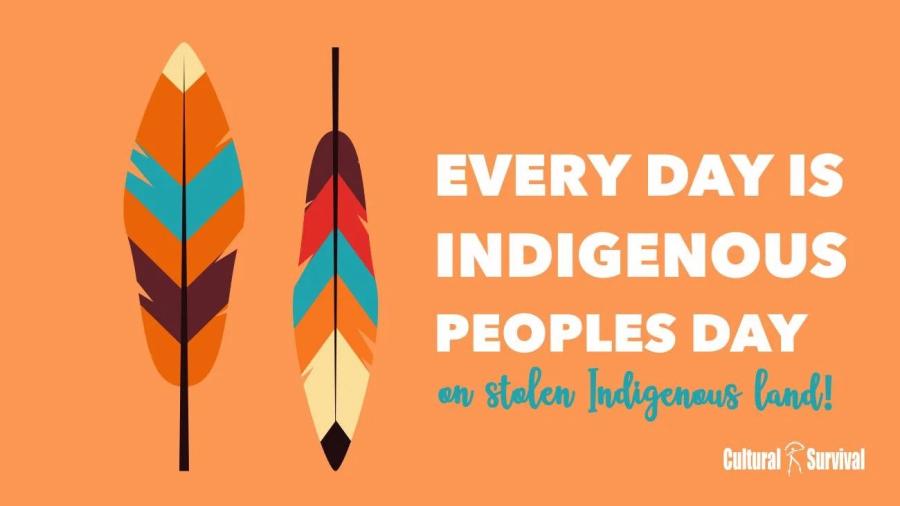Missionary activity aimed at "civilizing" and settling indigenous populations in order to educate them deserves some reflection.
"Educate" in this case does not imply an improvement in the Native American's life; quite the contrary. This educational process leads to a total dependence on values and products manufactured in industrialized societies.
Through the educative process the native is gradually but firmly indoctrinated in foreign histories. Students lose their identity, the values of their culture and the meaning of their own history; they are left with a language removed from their own traditions.
I believe that missionary education is not a process that promotes self-sufficiency and the survival of indigenous culture, but rather one that constitutes a well-anesthetized death for native cultures. Missionary indoctrination is even more dangerous than political injustice; it is far more difficult to take up arms against "education" than to fight military or other forms of political oppression.
If the missionaries finish their job properly, we find the natives stripped of their culture; in spite of newly-acquired knowledge their life is impoverished.
Most missionaries concentrate on the young; older generations are usually ignored. Students are constantly subjected to comments by missionaries undermining the older people by implying disdain for their traditions and pointing out the "hard life" they had had - a consequence of their not having received a "decent" education. These insinuations reflect all the prejudices held about indigenous populations of Latin America for the past five centuries; e.g., that Indians are criminals, ferocious, cutthroats, traitors, lazy, ungrateful, drunks, sensual, retarded, irrational and ignorant. This brainwashing breaks down the native's sense of self-worth and esteem and leads the young to reject their customs and traditions, converting them into enemies of their own culture, turning them away from the teachings of their elders and rupturing family ties. Ultimately rebellion is a race down a dead-end street: the native runs from his own culture but cannot join the other one.
Young Native Americans retain portions of their cultural history, but these are mere fragments that have lost their internal coherence. This pleases the missionary, whose main goal is the conversion of his students into malleable subjects which have neither a sense of personal history nor values.
Succeeding generations know even less of their own history and culture. Even though they may still speak their native tongue, it no longer serves to transmit their history nor the cultural values of their ancestors - their native language is an empty vehicle without meaning.
We thus find one-time missionary centers now populated by Native Americans converted into Westerners; they are now truly drunken, violent, treacherous, lazy, poor, ignorant and backward. They no longer know how to work or produce and have lost the creativity that was once nourished by their indigenous cultural traditions. They no longer want to live in their own communities - now they need alcohol, cigarettes, etc. In towns their newly-acquired needs lead them to steal and otherwise obtain manufactured items with a minimum of effort. These natives have lost the morality of their culture: They mistreat their parents and relatives and live a tormented life from one drunken spree to the next. Upon viewing this situation, no one thinks to link it to its real cause - missionary education - rather, old colonial prejudices are called up: He's drunk because he's an Indian; he's lazy because he's an Indian; he's dumb and ignorant because he's an Indian, etc.
Meanwhile, city dwellers blindly support missionary efforts in the belief that this is the best thing that can be done for Indians.
Those of us who still have and live in authentic communities, which have inculcated in us a knowledge of the past 500 years of colonial history, are conscious of the fate missionaries proffer - well-anesthetized cultural death with anesthetics to ease the pain; e.g., gifts to headmen, gasoline, medicines and radios. These are not gifts - they are payment for the progressive death of our culture. As long as we fail to protest this activity, this tragedy will repeat itself again and again. And yet many continue to ignore the grave consequences of missionary efforts.
The missionary arrives. He orders the construction of a landing field for the airplane, a church for the religious services, he establishes a school and begins to relocate outlying villages into one large community. Missionaries use the name of the indigenous community to receive governmental consent for these activities without having asked the community itself for permission. The authorities see these petitions as normal, not pausing to consider that the missionaries are making their installations on the property of an indigenous community. How different government reaction would be if an indigenous community decided to install itself in a National Forest Reserve, a public park, or in the back yard of someone's house in Caracas! Yet territory which is invaded by the missionaries, however, never reverts to the indigenous community, but is converted into patrimony either of the church or the government. Once this alliance between government and church was consolidated, the indigenous community was deprived of any effective means of protest.
Along with "education," missionaries import regulations such as the appointment of headmen and commisaries, which directly affect the political affairs of the community, stratifying the community and its members. This is not just a superficial, formal stratification. It radically splits a people who had been essentially equals - a people whose leaders and intellectuals (shamans, historians and knowledgeable elders) shared in the daily affairs, subsistence activities, and communication with all members of the community. These leaders had no body guards, and no previous appointment was required when one wanted to speak with them. Confidence was the norm between the people and their leaders.
Accompanying the missionary installations and the newly-created social inequalities are the creation of rich and poor factions. These differences are reflected in the physical layout of the community, where the church and religious infrastructure occupy much of the area (the church, residence for the priests, school, infirmary, stables, etc.) and the indigenous members find themselves in the periphery with less land to themselves. Traditional leaders lose their power of influence. They are no longer sought put for advice; now people go to the missionary house. Visitors also go directly to the parsonage, leaving the indigenous sector to one side, subordinated to a lower slot.
Where there are missionaries there can be no true progress for the indigenous population - traditional economies are annulled or destroyed. Missionaries take control of land, equipment, or inputs and they lend rather than donate or sell to the communities. In this way they maintain control over the production and over those who work for them. The missionary thus directs community production and marketing. Not only do the missionaries impose a new economic regime on the indigenous communities, they leave the natives in ignorance as to the rules of the game - the importance of the ownership of land and machinery, the concept of economic gain, and countless other concepts vital to survival in the new system. This results in the insertion of indigenous Americans into the lowest rungs of a system they do not understand, with the ultimate consequence being poverty and the eventual loss of ancestral territories which end up in the hands of private owners or the government.
Some missionary programs deceive the outsider, since they seem to aid the indigenous communities. Programs such as The Family Vegetable Plot "teach" farming to peoples who have introduced countless cultigens, both nutritional and medicinal, to Western civilization. Crafts workshops "teach" ceramics to people who have made pottery for thousands of years. The only result is the fattening of the pocketbooks of the heads of these so-called aid programs, who appropriate a good part of the federal funds designated for the indigenous communities.
The kind of aid programs that indigenous communities really need are courses in which the basic concepts of Western law and economics are explained, or courses in which new technological knowledge is imparted (such as the use of ceramic kilns) and then turned over to the indigenous groups to manage in their own way, thus eliminating the need for intermediaries whose presence can only be interpreted as a deliberate policy for the appropriation of the resources which should pertain to the communities themselves.
Indigenous and Western cultures cannot blend: They are like fire and water.
Article copyright Cultural Survival, Inc.



